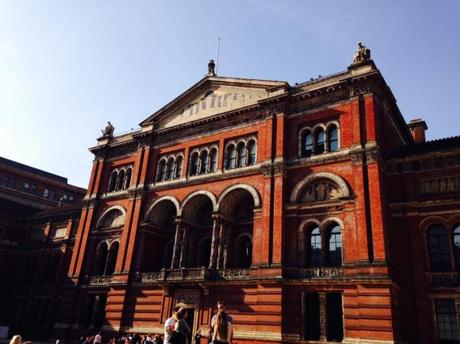

One of my favorite parts of London is Kensington and Chelsea, mainly thanks to its architecture; the streets of lavishly beautiful Victorian homes are a true sight for sore eyes. I have been meaning to explore the area in more depth and take a trip to Brompton Cemetery, West London’s version of Highgate Cemetery, for some time, but the weather has been so unpleasant of late that there hasn’t been much opportunity. So, when I woke two Saturdays ago to Mediterranean levels of sunshine, I knew that it was going to be a perfect day for a cemetery visit - obviously. Thankfully my friend Emma agreed, and so off we set, via King’s Road, to Brompton, which is about a twenty minute brisk walk down the Fulham Road from South Kensington tube station. On the way, we passed ridiculously lovely streets of houses, of the type you normally see in romantic comedies that like to pretend that everyone in London lives in gorgeous squares of redbrick townhouses with their own private gated gardens in the middle. Just like all films set in New York have their main characters working as waitresses who somehow manage to live alone in a four room Brooklyn brownstone apartment that costs $2000 a month to rent. These waitresses have got to be getting some good tips. Anyway, I digress!


Once you reach the slightly more down-at-heel end of the Fulham Road, you know you’re nearly at the cemetery, and a very grand entrance off the street is the gateway to an enchanted land that feels entirely out of place in its surroundings. As it is owned and managed by the Royal Parks, it is far more well kept than Highgate, and its lack of much interesting topography lends it a rather more manicured and conventional air. Nonetheless, it is still sufficiently overgrown in places to feel mysterious and slightly eerie, and there is a very pretty colonnaded area in the middle, alongside a Grecian chapel, that make it a cut above the ordinary cemetery. What I found most interesting about Brompton is the number of architecturally unusual gravestones. There are some particularly beautiful art nouveau monuments, including the cemetery’s only listed monument, a beautiful floral copper casket made for the prominent shipping magnate and patron of the Pre-Raphaelites, Frederick Richards Leyland, which is the only funerary monument ever made by Edward Burne-Jones. There is also a good crop of art deco memorials, including a fascinating one that tells the story of a soldier who defeated a zeppelin raid in 1915, and much to my delight, Emmeline Pankhurst’s gravestone, which is notable for its fresh flowers; I’m glad to see that she is still so highly appreciated.


After a good long stroll through the cemetery, we caught the bus back to South Kensington and dropped in at the V&A to soak up the sun in its beautiful gardens. We then fancied a change of scene, and so headed off to Southbank, where we browsed the book market, sat and watched the world go by, took in a wonderful exhibition of actor photographs in the free gallery at the National Theatre, and saw the sun go down over the river. The city was bustling with people out enjoying the sun, and there was a real holiday atmosphere in the air. I almost felt that I was back in New York, and it was a welcome reminder that summer is finally on its way.


